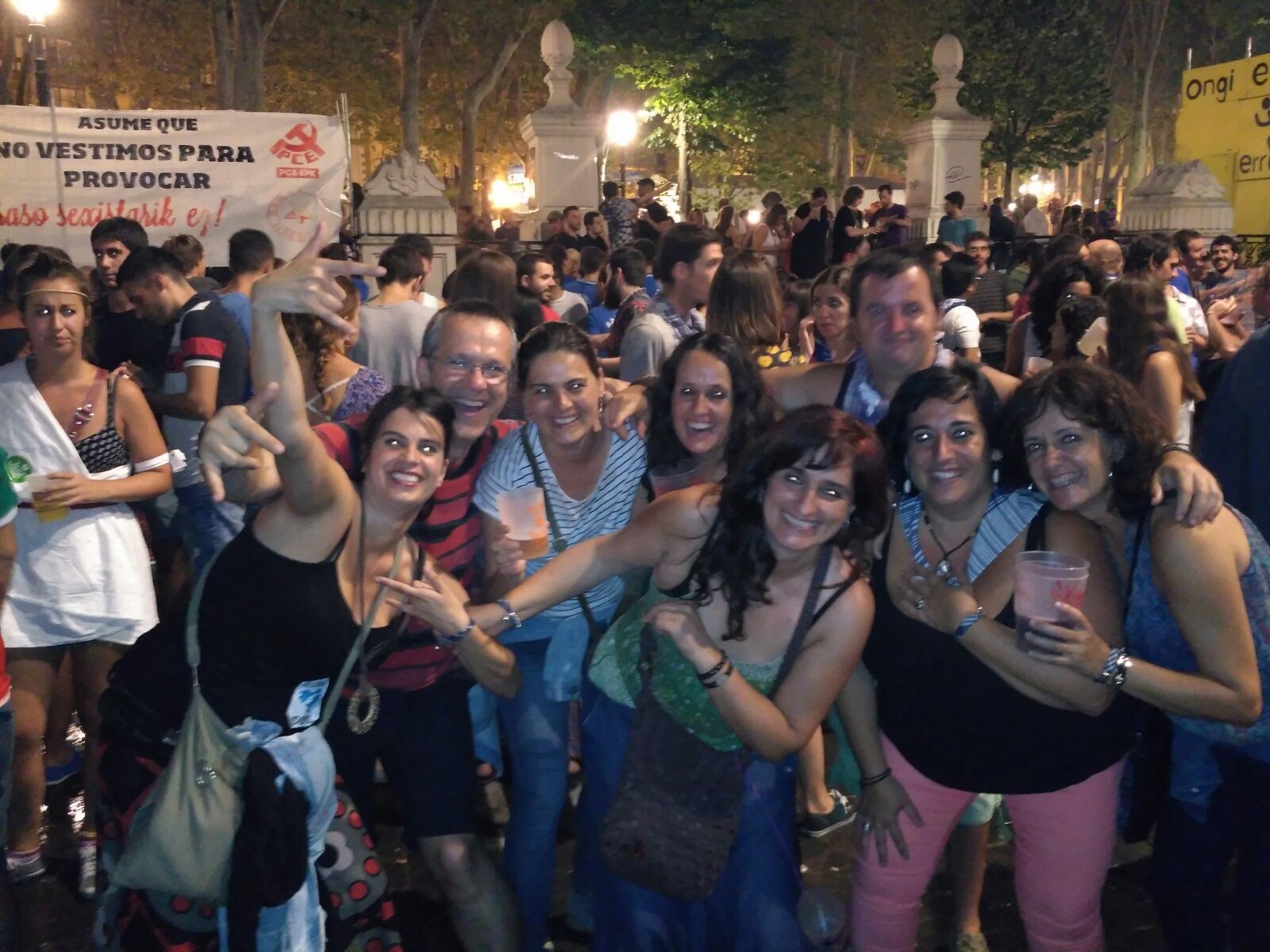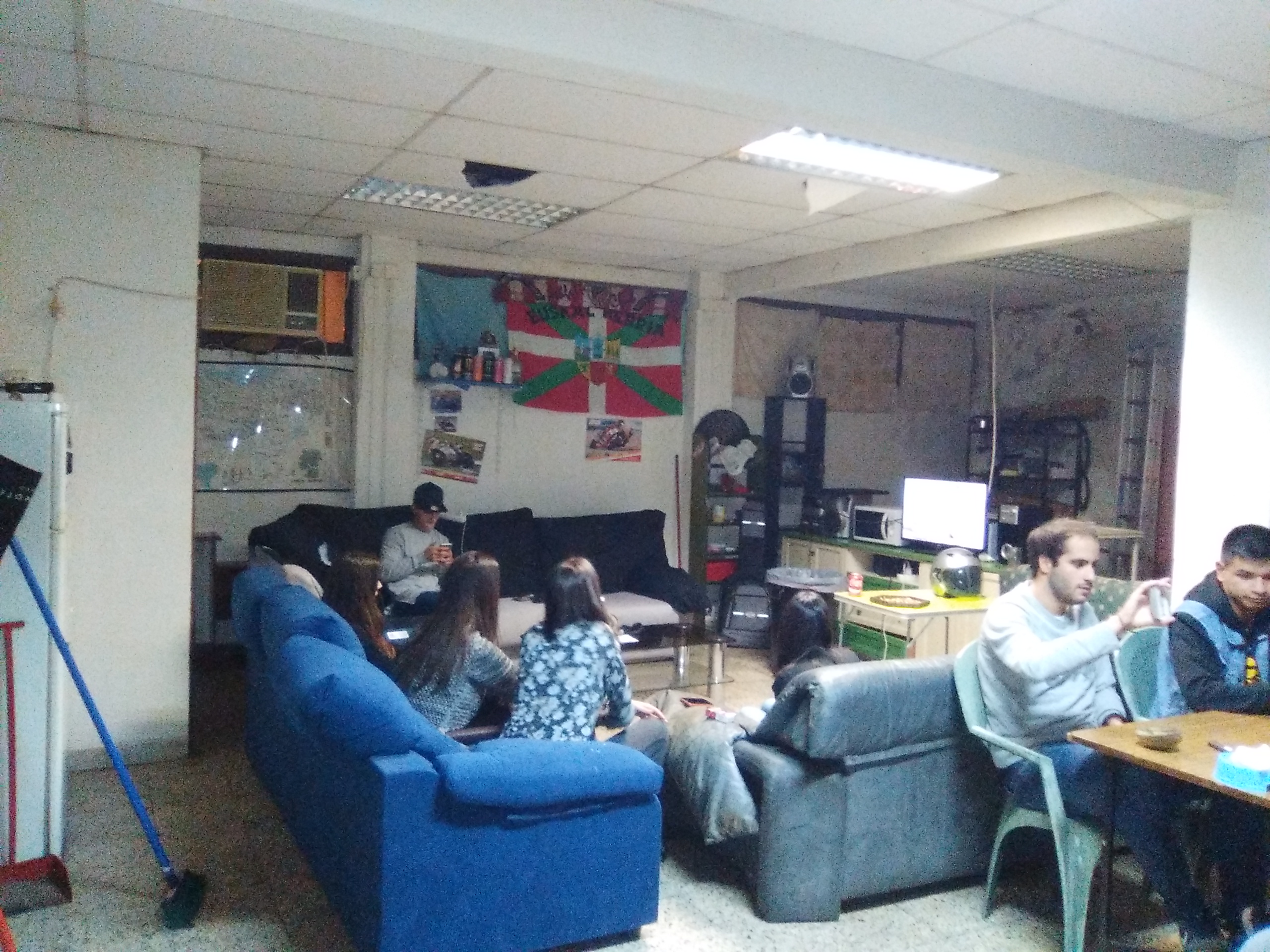Basque ethnography at a glance

All-nighter in Bilbao, 2016. Akaitze Kamiruaga. Labayru Fundazioa Photographic Archive.
In the 1980s it became quite common for young boys and girls to pull an all-nighter and party away, particularly during the innumerable patron saint festivities celebrated in the summer throughout the territory. This practice is known in Basque as gaupasa.
All-nighters were held both in rural and urban areas. Let us stick to the former, more precisely to Gernika and surroundings. In small localities this way of entertainment usually started in teenage years, and in larger population centres, a little later. In the beginning lads and lasses stayed up all night more frequently, and as the novelty wore off, they would confine their partying sprees to certain weekends a month.
They met at around 11 at night, following supper, and raved the night away till around 7 in the morning. Full nights out were more frequent in the summer, when the weather is good and festivals abound, allowing party lovers to return home even later, with their stomachs full after a good breakfast but exhausted and eager to get into bed.
They used to begin drinking beer and kalimotxo, a mix of red wine and coke, and moved on to stronger cocktails as the night progressed, such as rum and coke, and shots. The caffeine contained in the drinks and the alcohol helped stay awake. Some of the youth were regular cannabis consumers, and those who aimed still higher experimented with cocaine and speed. What is more, there was a day when heroin circulated among youngsters causing great harm. Bunches of juveniles socialised in pubs and poorly lit establishments where the latest music hits were played at full volume. Open-air bars known as txosnas were installed during the festivities, and still are, by cultural and sports associations to raise money.
Young people got together in closed groups of friends who in many instances knew one another since childhood. Boys and girls set off the evening separate ways and often mingled in the early hours of the morning. If the night out was held in their own village or town, the members of the group walked. They would take the bus or the train to move around the neighbouring area but did not generally travel over distances greater than 15 or 20 km. Due to the risk it entailed, driving was avoided.
Partygoers wore casual clothes, normally a t-shirt and jeans. As a rule, twenty-odd-year-olds in the first stages of a relationship stopped feasting from dusk to dawn.

A lonja in Zamudio (Bizkaia), 2016. Maider Aurrekoetxea. Labayru Fundazioa Photographic Archive.
Since approximately the start of the third millennium, the way teenagers entertain themselves has changed. Mixing with others in bars involves a considerable expense not everybody can afford, and to top it all, there is a minimum age requirement for selling and serving alcoholic beverages. In view of the situation, the young today share their free time in premises at street level they rent named lonjas, boys and girls mostly apart.
Rather large groups of friends gather in these properties to chat, watch television, and have something to eat and drink, for there is usually a microwave oven and a fridge. Some stay on until late at night and return home without visiting the bars.
Segundo Oar-Arteta – Etniker Bizkaia – Etniker Euskalerria Groups
Translated by Jaione Bilbao – Language Department – Labayru Fundazioa
Reference for further information: Rites from Birth to Marriage, part of the Ethnographic Atlas of the Basque Country collection.

